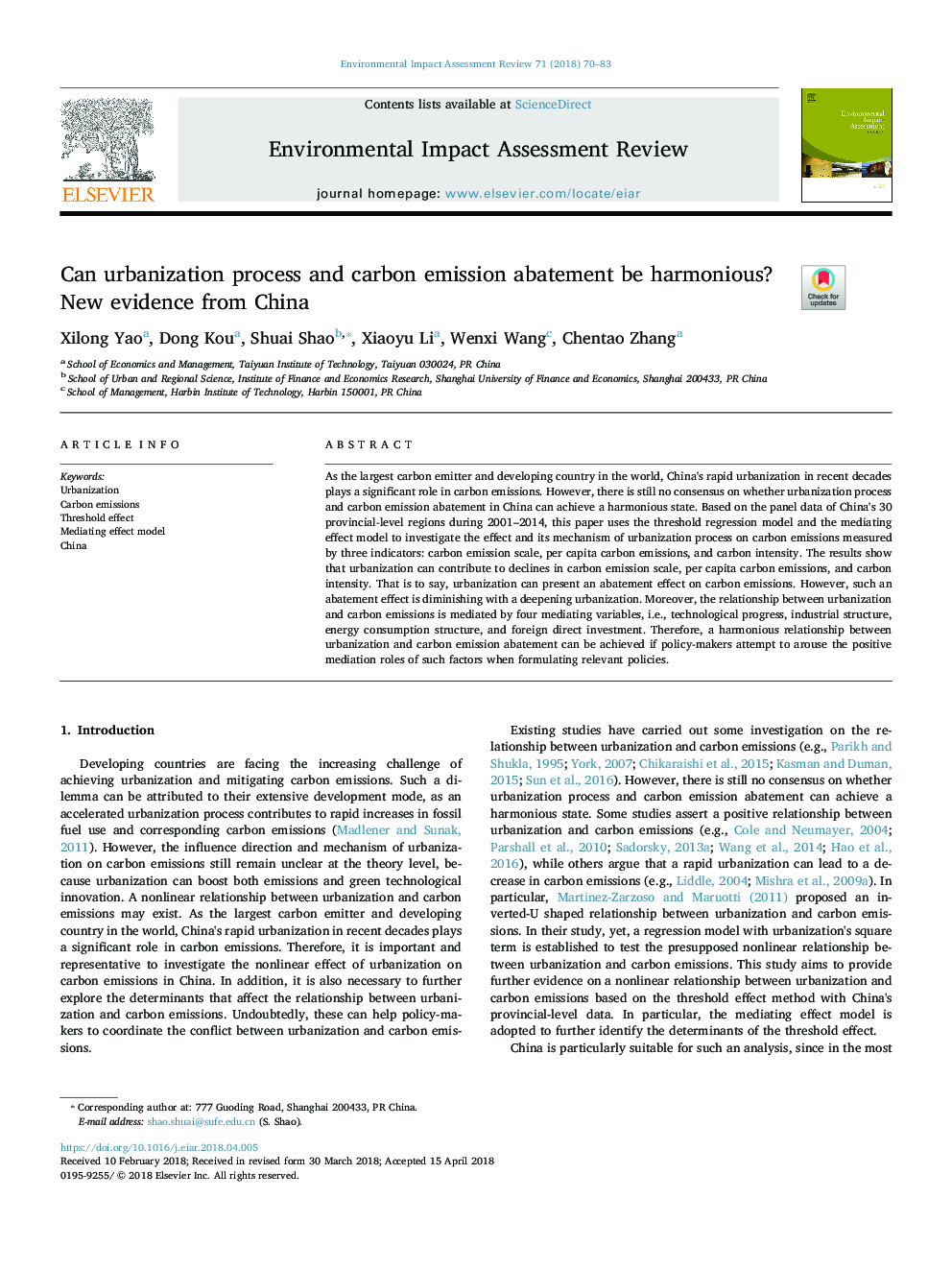| Article ID | Journal | Published Year | Pages | File Type |
|---|---|---|---|---|
| 7464815 | Environmental Impact Assessment Review | 2018 | 14 Pages |
Abstract
As the largest carbon emitter and developing country in the world, China's rapid urbanization in recent decades plays a significant role in carbon emissions. However, there is still no consensus on whether urbanization process and carbon emission abatement in China can achieve a harmonious state. Based on the panel data of China's 30 provincial-level regions during 2001-2014, this paper uses the threshold regression model and the mediating effect model to investigate the effect and its mechanism of urbanization process on carbon emissions measured by three indicators: carbon emission scale, per capita carbon emissions, and carbon intensity. The results show that urbanization can contribute to declines in carbon emission scale, per capita carbon emissions, and carbon intensity. That is to say, urbanization can present an abatement effect on carbon emissions. However, such an abatement effect is diminishing with a deepening urbanization. Moreover, the relationship between urbanization and carbon emissions is mediated by four mediating variables, i.e., technological progress, industrial structure, energy consumption structure, and foreign direct investment. Therefore, a harmonious relationship between urbanization and carbon emission abatement can be achieved if policy-makers attempt to arouse the positive mediation roles of such factors when formulating relevant policies.
Related Topics
Physical Sciences and Engineering
Energy
Renewable Energy, Sustainability and the Environment
Authors
Xilong Yao, Dong Kou, Shuai Shao, Xiaoyu Li, Wenxi Wang, Chentao Zhang,
